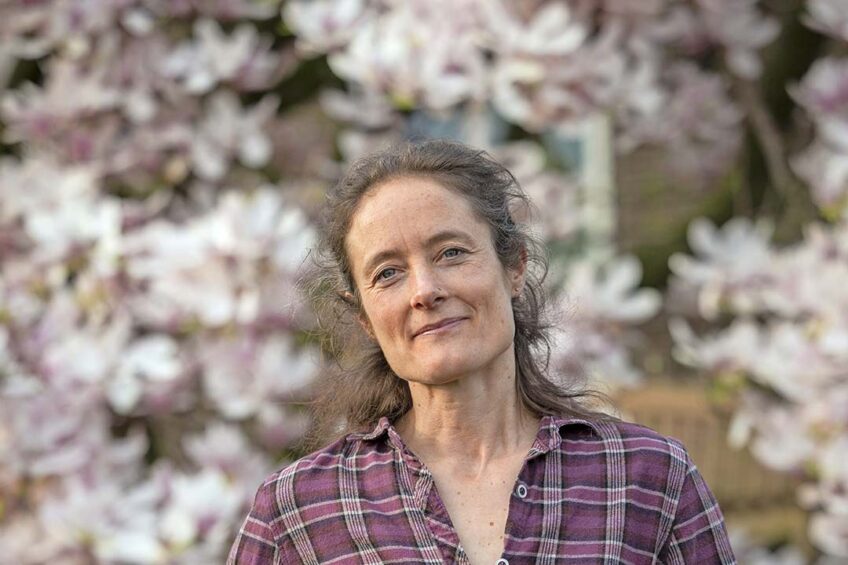Poultry welfare: ‘No checklists but practical solutions’

Vera Bavinck developed KipUP, a system to determine and improve the welfare of laying hens during production. This leads to more knowledge about production factors, less waste and possibly a better egg price.
KipUP determines welfare 4 times per flock cycle based on housing system and stocking density, enrichment material, red mite pressure, feathering, behaviour of the animals and the percentage of keel bone fractures. A web-based tool plots the data onto a spider web diagramme. Practical points for improvement can be identified by analysing well-being progress (as shown by changes in the diagramme) during the flock cycle and by benchmarking with other companies.
“You get a solid return on investment if you analyse welfare and act on the data the system provides,” says Bavinck. Poultry World spoke to her to find out more.
Why was KipUP developed?
During farm visits I noticed many keel bone fractures. They were so omnipresent other vets didn’t even see them anymore. But all those breakages must have negative effects. On top of that, since stopping beak trimming there is also a lot of loss due to pecking. I am a behavioural biologist and a veterinarian; I try to figure out what the background to that bird’s behaviour is, what she is looking for. I hate tick-box lists that are only for the show. You want lists that indicate: ‘This is your problem, this is the difference compared to a benchmark, this is the solution you could apply’. KipUP offers that.
How was it developed?
I brought at least 1 vet from every major veterinary practice in the Netherlands into the poultry houses. We then took the test together. They found it fascinating – a clear added value compared to their own company reports. The Barth-Misset fund then subsidised the further development of the system and testing in 12 companies, while the EU subsidised the construction and rollout of the database and website.
What will participation in KipUP cost?
Using the program and benchmarking costs €300 per house per year, plus 6 hours for scoring. That €300 doesn’t even cover the costs but I wanted to start with it and see if it will be a success.
What does it bring for the poultry farmer?
Working with chickens with sound welfare parameters provides a lot of job satisfaction. On top of that, you will save thousands of euros if you really analyse animal welfare and act accordingly. Dead loss is often seen as something that cannot be influenced. But that loss is the end of an entire process.
KipUP is intended to tackle issues as they start. If you are able reduce mortality, now often above 5-7%, the euros really add up in your favour. The same goes for getting paid a tenth of a cent more per egg because you have quantified well-being. This is what the Kipsters of this world and other concept production systems are doing. At 50,000 eggs per day that amounts to €350 per week. Then you can cover the costs very quickly.
How to guarantee proper screening?
It’s about the intrinsic motivation to critically assess the flock. It’s always good to have an extra pair of eyes looking. It is therefore better to have an advisor from the feed company implement KipUP, other than the appointed advisor or your vet. It’s all about introducing a fresh pair of eyes. A relationship of trust also entails the risk of less critical observations and loss of objectivity. But if a livestock farmer only wants to hear that everything is great, then KipUP is not going to be suitable. Then you should use the aforementioned standard checklists.
KipUP seems to fit in perfectly with the vision of the Beter Leven (‘Better Life’) quality scheme.
Yes. KipUP seamlessly offers what Beter Leven says it is looking for: structured and frequent testing of animal welfare during production. When I first started I thought: ‘This is their golden egg; they will rise to the occasion and implement KipUP’. But there was no response from the organisation. The Better Life quality label seems to be focused on the AssureWel programme. However, no chicken physically passes through the hands of an auditor there. Beter Leven thinks that is a big advantage. That may be a choice but then you will never get a well-filled, relevant database from which you can distill trends.
What’s your vision moving forward?
In 2 years’ time, I want to have 200 houses at home and abroad in the KipUP system. Now it’s up and running with 20 companies. I recently visited a US company with 40 million laying hens. The 2 young entrepreneurs there were completely into data. They want to sell their eggs with a ‘plus’ in animal welfare. They love that I came up with these hexagrams based on their data. That made me realise that I have to rely on that generation in the sector, on the generation led by numbers instead of the generation based on gut feeling and experience. I have a number of big, ambitious young entrepreneurs in mind to approach. Then I will try to get publicity. The system has to prove itself. I am confident that it will.
Are you going to market with the animal welfare database?
Certainly. If a group of 150-200 companies participate, you will build up a large database. I definitely see opportunities for parts of the trends, the extremes and the shifts in animal welfare. For 200 houses we can analyse what happened and why it happened. And it is precisely that last question which is the interesting one. Could red mites and pecking be linked? Then you suddenly take steps towards animal welfare that you had never even thought about before.












